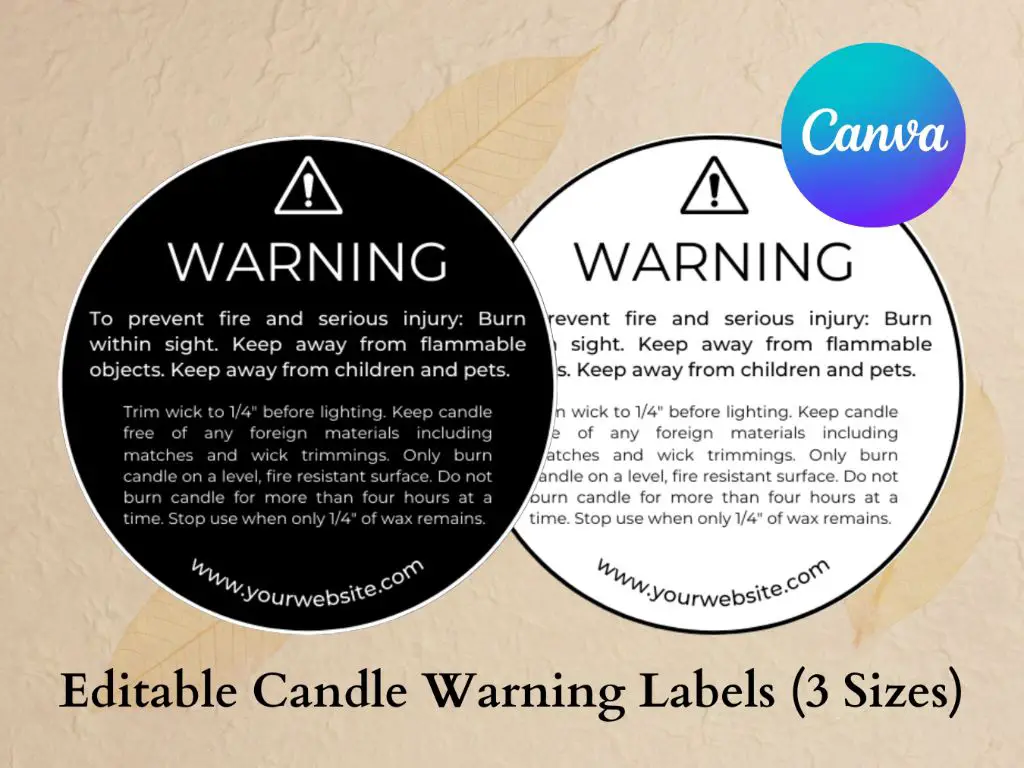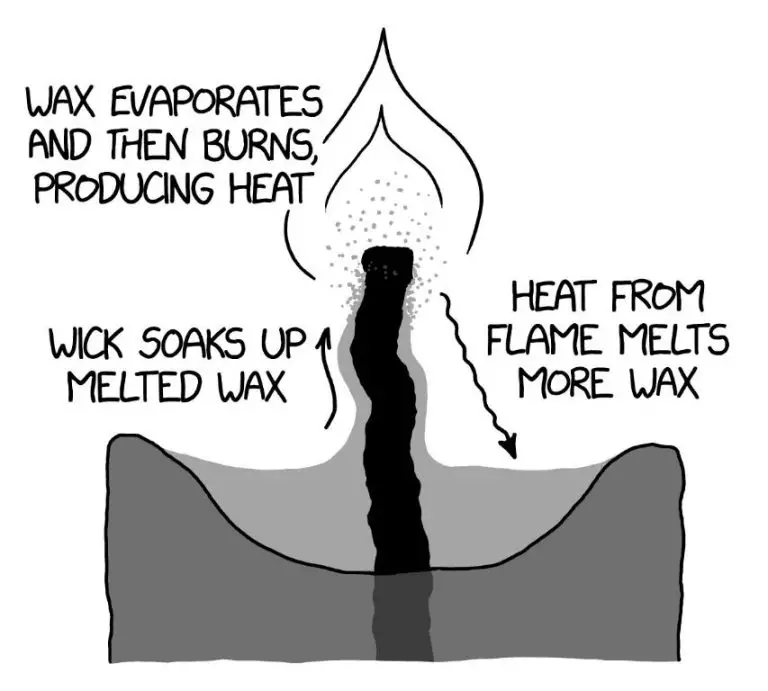What Is Required On A Candle Label?
Candle labeling requirements are an important part of the candle making and selling process. Proper labeling ensures safety and provides customers with all the necessary information they need about a candle. Though not regulated by the FDA, there are general guidelines candle makers should follow for labeling their products. This includes providing details like company information, product identification, net weight, ingredients, warning statements, usage instructions, and disposal guidelines. Following candle labeling requirements demonstrates a commitment to quality, safety, and customer service. It also helps candle businesses legally cover their bases. This article will outline key candle labeling requirements to be aware of.
Company Information
The label for a candle should include the company’s name, address, phone number, email, and website. This contact information allows consumers to reach the manufacturer or distributor with any questions or concerns about the product.
According to the Candle Label Requirements, Guidelines, and Best Practices from CTMLabelingSystems.com, “The company name and contact information requirement applies to either the distributor or the manufacturer of the candle.”
At minimum, the label should contain the legal name of the company that manufactured or distributed the candle, along with the company’s street address and phone number. Many companies also choose to list a website or email address as additional ways for customers to get in touch.
Including clear contact information builds consumer trust and confidence in the product and brand. It also allows the company to be reached if any issues arise with quality, safety, or other matters regarding the candle.
Product Identification
The product identification section should clearly state details about the candle, including its name, color, scent, size, shape, and other distinguishing characteristics. According to the labeling guidelines from CTMLabelingSystems.com, “The statement of identity is a generic name for the product, such as ‘candle,’ ‘scented candle,’ or ‘wax melt.'” https://ctmlabelingsystems.com/labeling/candle-label-requirements-guidelines-and-best-practices/
For example, the product identification could read: “Lavender Vanilla Scented Candle, 8 oz. Round Jar Candle with Lid.” This identifies the specific name of the candle scent (Lavender Vanilla), indicates it is a scented candle product, provides the weight and shape details (8 oz. Round Jar). According to Mammoth Packaging, including the candle’s color, shape, and other distinguishing details can further identify the product for consumers. https://mammothpackaging.com/u-s-candle-label-requirements-guide/
Having an accurate and complete product identification helps buyers clearly understand the candle item they are purchasing.
Net Weight
The net weight on a candle label refers to the minimum weight of wax in the candle, not including the container or any decorations. According to the Candle Label Requirements Guide, candle manufacturers in the United States are legally required to disclose the net weight in both ounces and grams. The net weight should be displayed prominently and be easy to locate on the label.
There are no federal regulations dictating the minimum net weight for a candle. However, common practice in the candle making industry is to have a minimum net weight of 1 ounce or 28 grams. Very small container candles may have a net weight below 1 ounce, but most standard sized candles will meet or exceed this weight. The net weight is important for consumers to understand how much wax they are getting and to compare between candle products.
Ingredient List
One of the most important pieces of information that must be included on a candle label is the full ingredient list. This includes all components used to make the candle, with special attention paid to any potential allergens or toxic materials.
The ingredient list should contain any waxes, oils, dyes, pigments, and fragrances used in the candle. The specific fragrance components do not need to be listed unless they contain known allergens. According to the U.S. Candle Label Requirements Guide, at minimum, the ingredient list should specify the type of wax (soy, paraffin, etc.) and fragrance used (floral, fruit, etc.).
Listing all ingredients allows consumers to make informed choices, especially those with sensitivities. Candle makers should strive for full transparency and disclosure. Precise percentages or amounts of each ingredient are not mandatory, but all components must be included.
The ingredient list should be easy to find on the label. It is typically placed near the product identity statement. List ingredients in descending order of predominance by weight, similar to food labels.
If candle ingredients may contain latex, wheat, shellfish or other common allergens, call special attention to this. Overall, a complete ingredient list helps candle buyers understand exactly what they are purchasing.
Warning Statements
Candles can pose fire hazards, so candle labels in the United States are required to include certain warning statements about flammability and safe usage per the Consumer Product Safety Commission. These statements alert consumers to important safety information.
Required warnings include:
- “Keep out of reach of children and pets”
- “Never leave a burning candle unattended”
- “Keep away from things that catch fire”
- “Trim wick to 1⁄4 inch before lighting”
- “Do not burn more than 4 hours at one time”

The warnings have to be conspicuous and prominent. Using an all-caps bold font and symbol alerts like the flame icon can help make the warnings stand out. The warnings generally go at the bottom of the label.
Usage Instructions
Proper usage instructions are critical for candle safety and preventing accidents or injuries. According to the Packleader USA blog, candle labels should always include clear instructions for safe use and handling [1]. Some key instructions to include:
– Only burn candle within sight. Never leave a burning candle unattended.
– Keep wicks trimmed to 1⁄4 inch before lighting to avoid high flames.
– Burn candle in a heat-safe holder on a stable, level, heat-resistant surface.
– Keep candle away from flammable objects like curtains, books, or trees.
– Do not burn for more than 4 hours at a time.
– Keep out of reach of children and pets.
– Extinguish candle if consumed to within 2 inches of bottom or container feels hot.
– Do not move or carry a burning candle until wax is completely solidified.
– Allow melted wax pool to solidify completely before relighting.
Clear, step-by-step usage instructions like these can help prevent safety issues and let consumers properly enjoy candles.
Candle Safety
When burning candles, it’s important to follow safety precautions to prevent fires or injuries. Here are some key candle safety tips:
- Never leave a burning candle unattended. You should always remain in the same room and keep an eye on the candle at all times. https://candles.org/fire-safety-candles/
- Keep candles away from drafts, vents, ceiling fans, and air currents. Drafts can cause the flame to flare up and increase the risk of catching nearby objects on fire. Place candles on a stable, heat-resistant surface away from air vents. https://www.fmins.com/blog/candle-safety/
- Keep burning candles at least 12 inches from anything flammable such as curtains, furniture, bedding, papers, flammable decorations or cloth. The safest place for a candle is on a sturdy table on a nonflammable surface. https://www.nfpa.org/education-and-research/home-fire-safety/candles
- Never burn a candle all the way down. Extinguish the flame if it comes within two inches of the holder or container.
- Always use a candleholder specifically designed for candle use. The holder should be heat resistant, sturdy and large enough to contain any drips or melted wax.
- Keep candles up high, out of reach of children and pets to prevent knock over accidents.
- Never leave a burning candle unattended overnight.
Proper Disposal
When you are finished with a candle, it’s important to dispose of it properly to avoid potential safety or environmental hazards. Here are some tips for safe candle disposal:
Remove all remaining wax – Let the candle burn down completely if possible. For jars, place in the freezer until the wax easily pops out. Use a knife to pry out remaining wax.
Recycle/repurpose containers – Glass and metal containers can often be recycled. Repurpose glass jars for food storage or crafts. Donate usable containers to thrift stores.
Throw away containers – If not recycling, empty glass jars, metal tins, and other containers can go in the regular trash. Make sure no wax remains.
Don’t put wax down drains or in landfills – Hardened wax can clog pipes. Wax buried in landfills never decomposes. Allow wax to fully harden and throw away.
Drop off at specialty recycling – Some candle retailers like Yankee Candle accept used candles for recycling. Call ahead to verify.
Consider donating – Shelters often accept partially used candle donations if wicks are trimmed and candles are in safe containers.
By properly removing wax and disposing of or recycling containers, you can safely and sustainably dispose of used candles.
Conclusion
In summary, there are several key requirements for candle labeling in the United States. Candle labels must include the company name and contact information, a statement of identity specifying that it is a candle product, the net weight, a complete list of ingredients, any necessary warning statements, usage instructions, and candle safety information.
Warning statements should advise consumers of fire hazards and provide proper candle burning instructions. Usage instructions should cover things like keeping wicks trimmed and not leaving candles unattended. Proper candle safety guidelines include keeping candles away from flammable materials, not burning for more than 4 hours, and keeping out of reach of children and pets.
Candle labels serve the important purpose of informing consumers so they can safely enjoy candle products. Following labeling requirements and best practices helps ensure quality, transparency, and safety.





